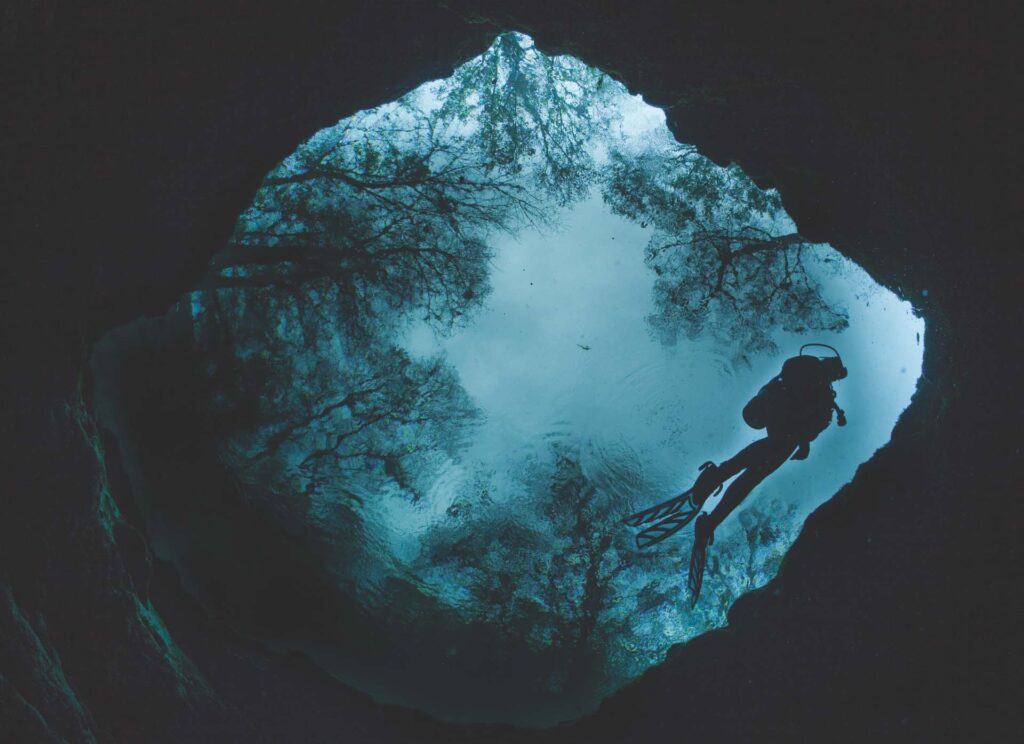Diving in Southwest Florida is an adventure thanks to the more than 280 sites off the coast. That number keeps growing as new reefs are created to provide stable habitats for fish, turning the Gulf into a hotbed for underwater exploration.
The newest oasis is in Lee County—The Mount, an artificial reef funded by Florida Fish and Wildlife Conservation Commission and The Sport Restoration Program. The reef, which sits 60 feet deep, is made with more than 1,000 tons of recycled concrete. Fish naturally took to The Mount within a couple of hours of its initial sinking, but it can take about three to five years for the site to fully flourish. Meanwhile, the 36 artificial reefs Collier County created from 2015 to 2016—one of the world’s largest projects of its kind—have had a chance to develop, offering plenty of opportunities to dive the Gulf.
Though it’s low impact, scuba diving—with the 40-plus pounds of gear needed and long underwater sessions—provides a strenuous workout that engages all the major muscle groups. The mental benefits of disconnecting and being surrounded by a watery ecosystem are monumental, too. Once you leap into the azure ocean and see a school of goliath groupers hovering around a 400-foot ship or a thriving coral reef system blooming on a 500-ton concrete piling, you may forget you’re exercising entirely.
Collier County continues to become more of a draw for divers since its 2015-2016, $1.35 million artificial reef project. Though Hurricane Ian has affected some sites throughout the region, local divers report conditions are good and continue to improve. For beginners, Clam Pass lies at 25 feet deep, with manatees, seahorses and bait fish. Doctor’s Pass, a 5-mile reef at 34 feet deep off the coast of North Naples, is known to host red groupers, angel fish and the occasional barracuda. Intermediate divers can travel 12 miles west of Doctor’s Pass to a shrimp boat wreck, which lies about 50 feet deep. Best reserved for experienced cave divers is Black Hole, 27 miles off the coast of Naples; the crater has a 100-foot circumference, and the bottom of the bell-shaped cavern lies at 225 feet (psst—the natural sinkhole is a great spot for underwater photography). Goliath groupers gravitate toward large, steel structures, like the 256-foot steamship Baja California. The ship was torpedoed by German U-boats conducting underwater raids in Allied territory, off the coast of Marco Island, during World War II. Another stellar dive site that is often touted as the best in the area, Baja California has been at 115 feet since 1942; it’s covered in coral, sponges and wildlife.
Further north off Boca Grande Pass, divers can venture to Power Pole Reef. The site contains a reefed ship and dozens of concrete power poles donated by the county. More advanced divers can head 30 miles off the coast of Sanibel to the USCGC Mohawk, dedicated to U.S. veterans. It sits upright 90 feet down. Since it’s had a decade to settle, the 165-foot-long ship is teeming with anemones, sea sponges and coral. Although the hurricane and time have damaged the ship, the opportunity to see whale sharks in the fall as they stop off on their way to spawn in the Caribbean makes it well worth the visit. Expert athletes trek to British freighter BAYRONTO, which sunk at 100 feet, about 35 miles offshore from Boca Grande, after a hurricane in 1919. The largest shipwreck off Florida’s west coast is great for spearfishing. For guaranteed excitement, Fantastico, a 200-foot-long Honduran freighter that sank in 1993, sits about 40 miles off the coast of Fort Myers, with sharks, dolphins, amberjacks and hundreds of reef fish. Hundreds of goliath groupers congregate at Fantastico for spawning season (July to September), making for a fun late-summer trip.
Besides providing a great, low-impact workout, these man-made dive sites stand as a perfect example of conservation as a win-win for nature and humans. Marine life gets food, shelter and other essentials, and we get a place to admire the creatures of the sea in all their glory.




